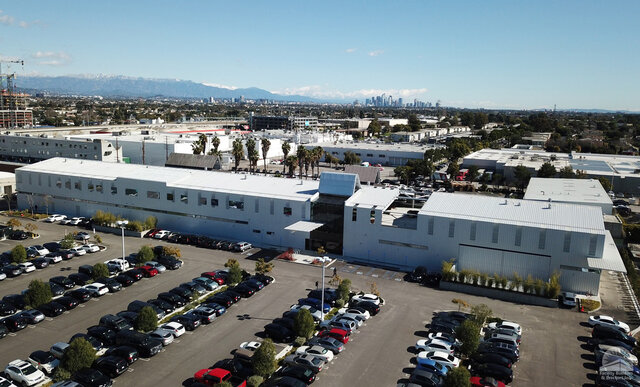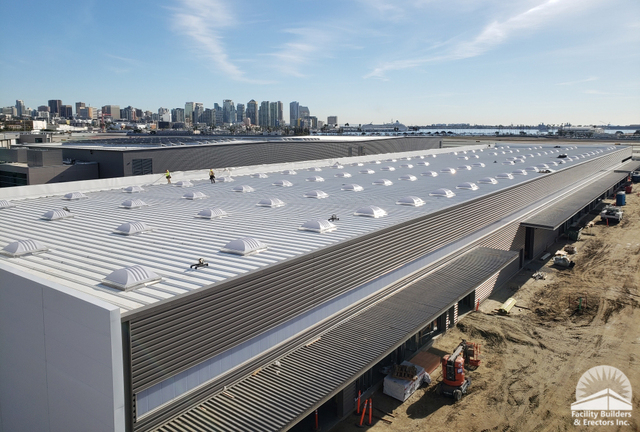When calculating the long-term return on investment of a new building, investors considering a pre-engineered metal building often ask: Are metal buildings worth it? And what makes them energy efficient?
Methods of Construction
Construction types can include frame and stucco, masonry, concrete tilt-up, structural steel and pre-engineered metal buildings. Each has its own benefits and optimal applications.
Talking with a Design-Builder, who has a strong understanding of the different construction type of materials, can help focus the investor's options for a specific building project.
Defining how a building will be used, for how long, and within what budget will help dictate the type of construction best suited for the project. If you are the owner, an important consideration is the "total cost of ownership": What is it going to cost over the life of the building to own it and to maintain it in a good condition?
The ROI of Energy Efficiency
According to Butler Manufacturing™, the industry leader of pre-engineered metal building systems made in the USA, a building's return on investment is 6-to-1 for every dollar invested in energy efficiency and code compliance.
And when public funds are in question, as in the case of many institutional buildings, the long-term savings from an energy efficient building are an even more critical part of the equation.
A waste management facility may have different performance requirements than a concert hall or a cold storage building, but every public building requires equally reliable, long-term, energy-efficient solutions, and that is why so many modern institutional facilities are designed with pre-engineered metal building systems.
Facility Builders & Erectors, Inc. (FB&E) specializes in the design and building of industrial, commercial, community and institutional facilities. From Public Works to transportation to renewable energy, it is critical to understand what each investor is looking for in the many options of a facility build. Balancing initial capital costs with building efficiency performance and ongoing maintenance costs over the life of the building are important investment decisions.
The best option for large facilities that need many years of service with minimal maintenance utilizing energy-efficient pre-engineered metal building systems.
The Benefits of Energy-Efficient Pre-Engineered Metal Building Products
Steel buildings are the top choice for aviation and aerospace facilities, industrial warehouses, manufacturing plants, and agriculture. Other uses include commercial buildings, churches, institutional, and self-storage units. Pre-engineered metal buildings inherently come with several advantages over traditional construction materials.
Faster Construction with Fewer Materials
As fewer components are needed, the construction of a pre-engineered metal building is energy efficient, requiring less labor and material than for other types of construction, offering investors immediate cost and time savings. When you're ready to expand your manufacturing facility, planning a pre-engineered steel building can accommodate your growth.
Flexibility of Design for Future Expansion
Because the frames are easily expanded, pre-engineered metal buildings can support an organization's growing needs. Your current state-of-the-art sports training facility might require an additional gymnasium or pool with locker rooms ten years from now; a pre-engineered steel building will give you that flexibility of design for a seamless addition while maintaining the overall integrity and efficiency of your facility.
Low Maintenance for Long-Term Savings
Perhaps the most valuable benefit of a pre-engineered metal building is that it's not just energy-efficient; it can be virtually maintenance-free for decades.
Besides Butler's innovative MR-24® standing seam roof system that boasts a 90 percent savings on roof maintenance costs over its expected 40+ year life span, today's pre-engineered steel building products also offer extremely durable finishes, such as specialized factory-applied paint, galvanized components, and reflective coatings for roofs and walls that give investors high performance and energy efficiency with low maintenance, reducing one's total cost of ownership.
"There are MR-24® standing seam roofs out there over 40 years old that show no signs of having to be redone--and probably have another 20 or 30 years of life in them," says Ken Thomson, owner and President of Facility Builders & Erectors, Inc., founded in 1993. "You can't get that on a built-up roof system, on a panelized roof for tilt up buildings. I look at that as a real value comparison.
"If you choose to build a conventional roof that's typically good for 10 years, you're going to replace it probably two or three times in the one lifetime of that standing seam metal roof."
Ultimately, the choice lies with the investor, based on who is going to own and maintain that building in future generations, such as with public buildings. "They'll need to ask the question: 'Do we want to pay a little more at the beginning in order to install a roof that is going to give us 40 years of life, or do we instead want to own it and plan on reroofing it again in 10 or 20 years?'"
The Total Cost of Ownership
The total cost of ownership is the key factor in considering your preferred method and materials of construction. As your pre-engineered metal building contractor, FB&E will, as part of the metal building shell solution, also factor in insulation systems, daylighting systems, doors and windows, equipment support platforms and other accessories to arrive at a complete building solution that will provide the highest return on investment for your facility project.
Call us today for a free consultation, and to learn more about the benefits of building with energy-efficient pre-engineered metal building systems.
Got a Project in Mind?
Published on July 30, 2021 | Comments: 0


Leave a comment